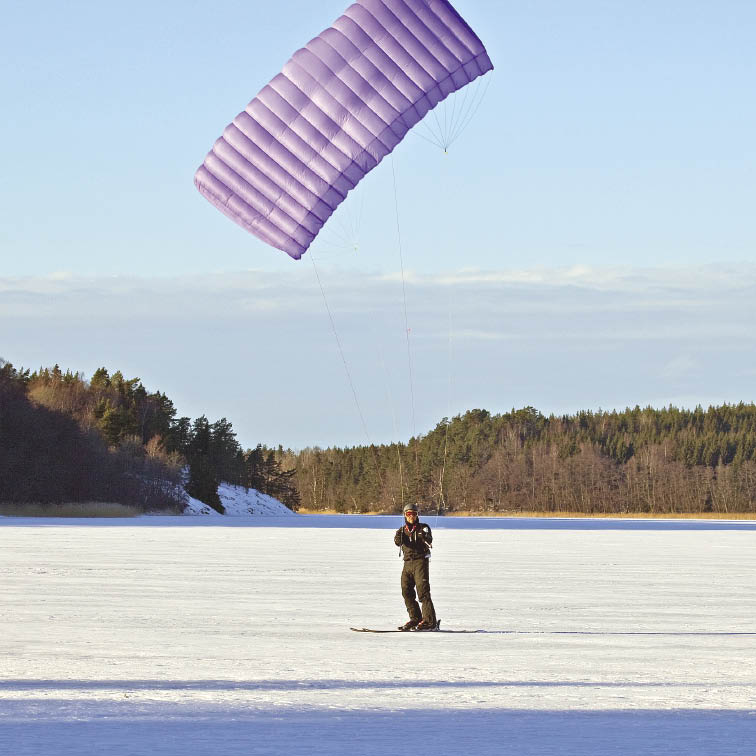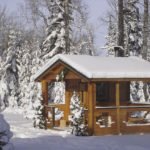“Pulling this cord de-powers the kite,” explained somebody or other.
I wasn’t paying attention. Sure, I was listening, and my eyes were trained obediently on the mass of cords that extended out to the deflated five-meter kite. But my focus was on the fact that, as soon as this safety talk was over, I would get to fly. Sort of.
It was early winter. A cluster of students and I were gathered on a slushy softball field at the University of Minnesota Duluth for an introductory snow kiting session.
Snow kiting, also called kite skiing, is an adventure-sports mutant. Take one giant kite—the kind you’d use to go kitesurfing on water—strap on a snowboard or a pair of skis, and let the wind’s power fling you across a flat, snowy surface, such as a frozen lake. Advanced snowkiters can add aerial moves to their arsenal.
Step one is learning how to fly the kite. It’s a bigger step than you might think. Nervousness fluttered in my stomach as I donned a harness, took the kite’s reins, and coaxed the kite into the air.
The nylon air sacs inflated like a bullfrog’s throat.
The kite came to life. Straining at the end of the lines, it bucked and twisted and swooped like some giant, demented bird. My arms and shoulders ached. I crashed it once, twice, then slowly began to grasp how to work with the invisible currents rather than against them. Soon I was tracing clumsy figure-eights in the air.
Then a rogue guest of wind seized the kite. Wind power increases exponentially with speed, so if the wind speed doubles, the power effectively quadruples.
The math made sudden, physical sense. The lines accelerated forward. My safety handler and I went skidding across the field, dragged by the irresistible force of the wind. I shrieked and then laughed, exhilarated.
It didn’t occur to me that I was in any danger. (Theoretically, the kite could have smashed us into an obstacle or even lifted us aloft.) Nor did I remember which of the dozen-odd cords I was supposed to yank. Eventually one of the instructors sprinted across the fielt and yanked it for me.
As the kite settled on the ground, all I could think was, “I have got to do that again.”
Wrangling this kite was, believe it or not, part of my New Year’s resolution. In years past, I had tormented myself with a prototypical list of dull-but-practical resolutions, few of which ever stuck.
“Eat more vegetables.” “Get organized.” Yawn.
Then, last December, I embraced a new approach to the rapidly approaching New Year. Instead of half-a-dozen halfhearted resolutions, I set a single intention: Make that winter as fun as possible.
If you’re going to gauge your overall quality of life, I can think of no better metric than fun.
It worked for me. Every time I considered an action or opportunity, I asked myself, “Will I have fun doing it?”
This simple question resulted in a season crammed with memorable moments.
So, as 2011 draws to a close, I have a bit of unsolicited advice: Ditch run-of-the-mill New Year’s resolutions in favor of ones you will actually enjoy achieving.
Now go have the best winter ever.
By Shelby Gonzalez
This story was originally published in the Dec.-Jan. 2012 issue of Northern Wilds Magazine.



